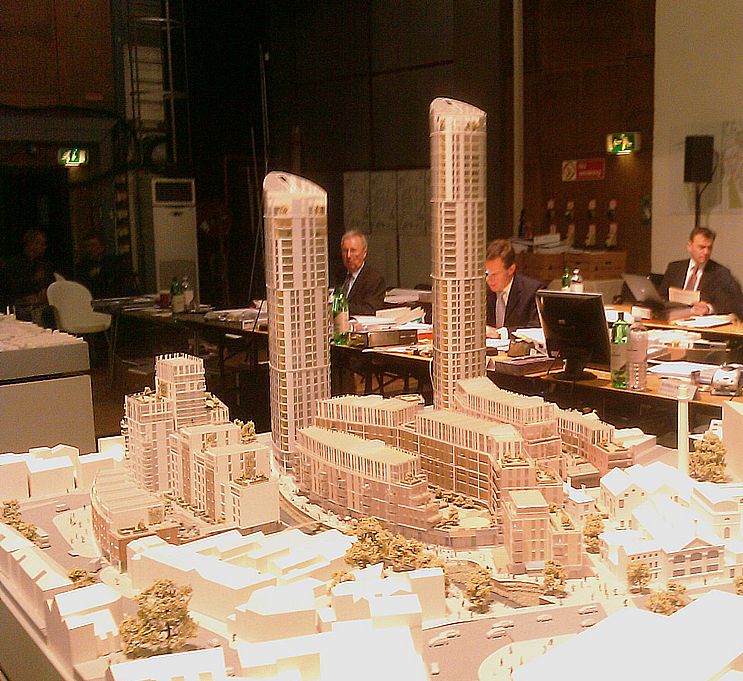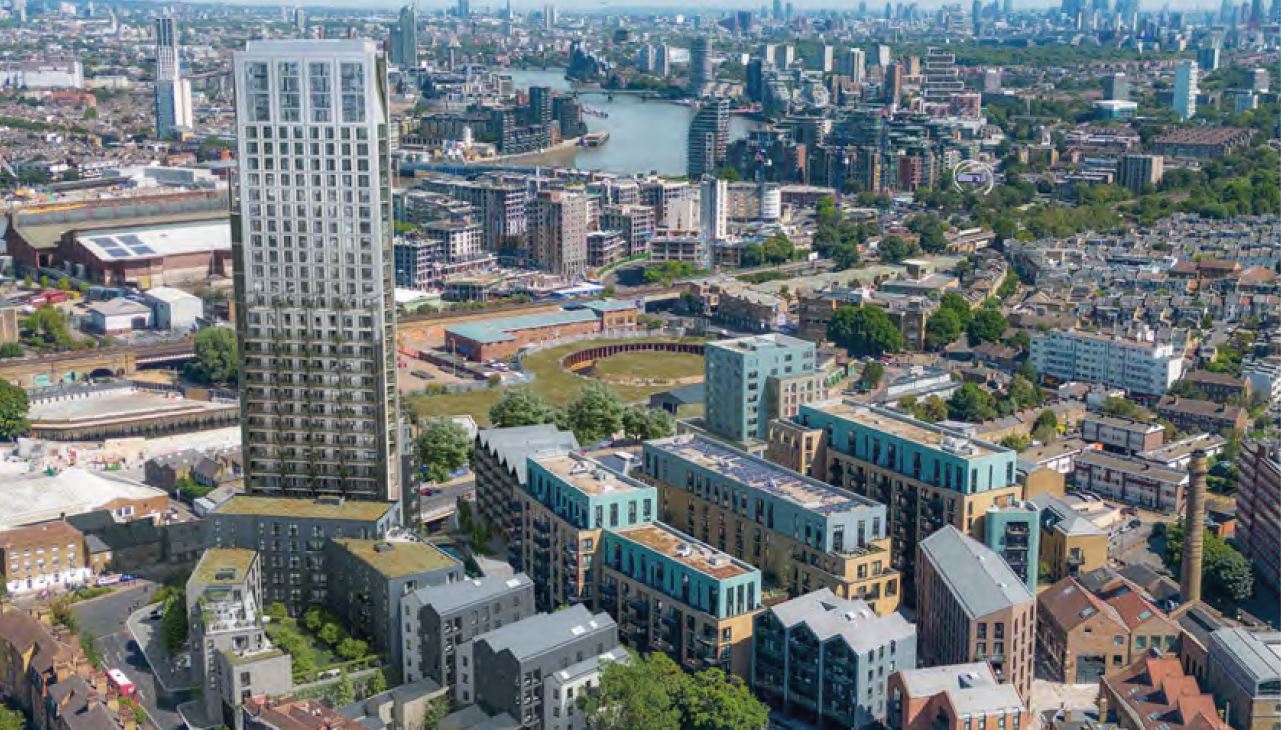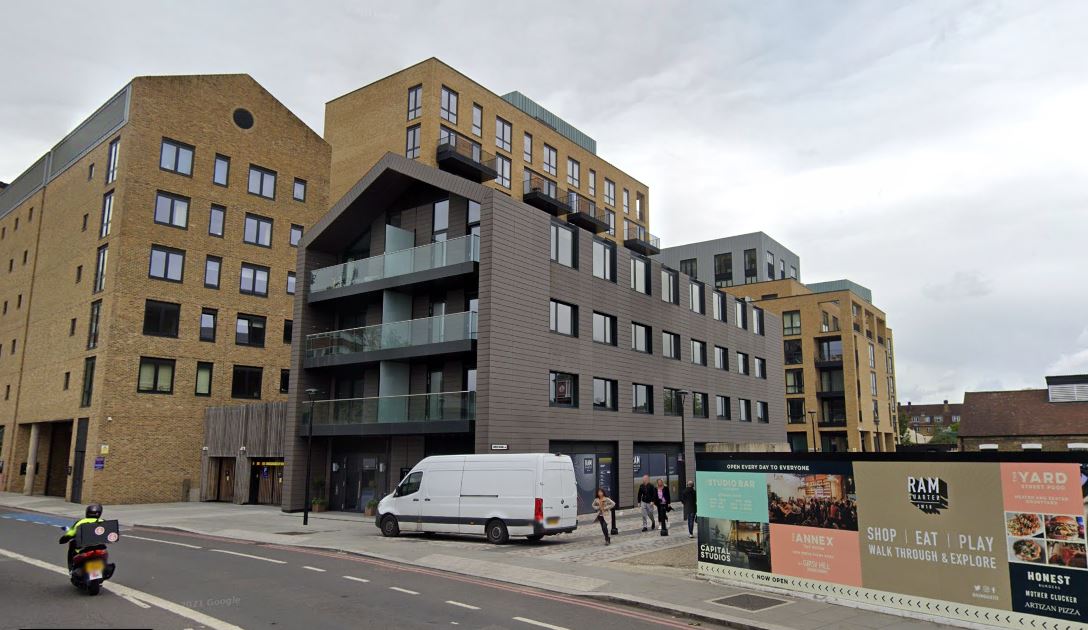A huge tower might finally get erected near Wandsworth town hall as work is starting again on the site where a development was approved ten years ago. The residential-led development on Armoury Way, renamed Wandsworth Mills by St George, comprises an overall consent for the tallest building so far in the borough with 36 storeys (or is it 37 storeys?).
St George is a division of UK development heavyweight Berkeley Group which bought the site last year with the aim of completing the final phases of the Ram Brewery project (formerly called Ram Quarter).
The Wandsworth Mills development comprises several separate buildings, featuring a tower situated on the corner of Armoury Way and the River Wandle.
The initial phase of this development will be Indigo House (in dark blue in the image further down), expected to be completed by 2026. In total, the scheme aims to deliver 375 luxury flats across 7 buildings.
According to St George’s brochure, a luxurious spa equipped with modern fitness facilities will be available, alongside a lounge, bar, and dining area that can be privately hired. Let’s not overlook the private cinema as well!
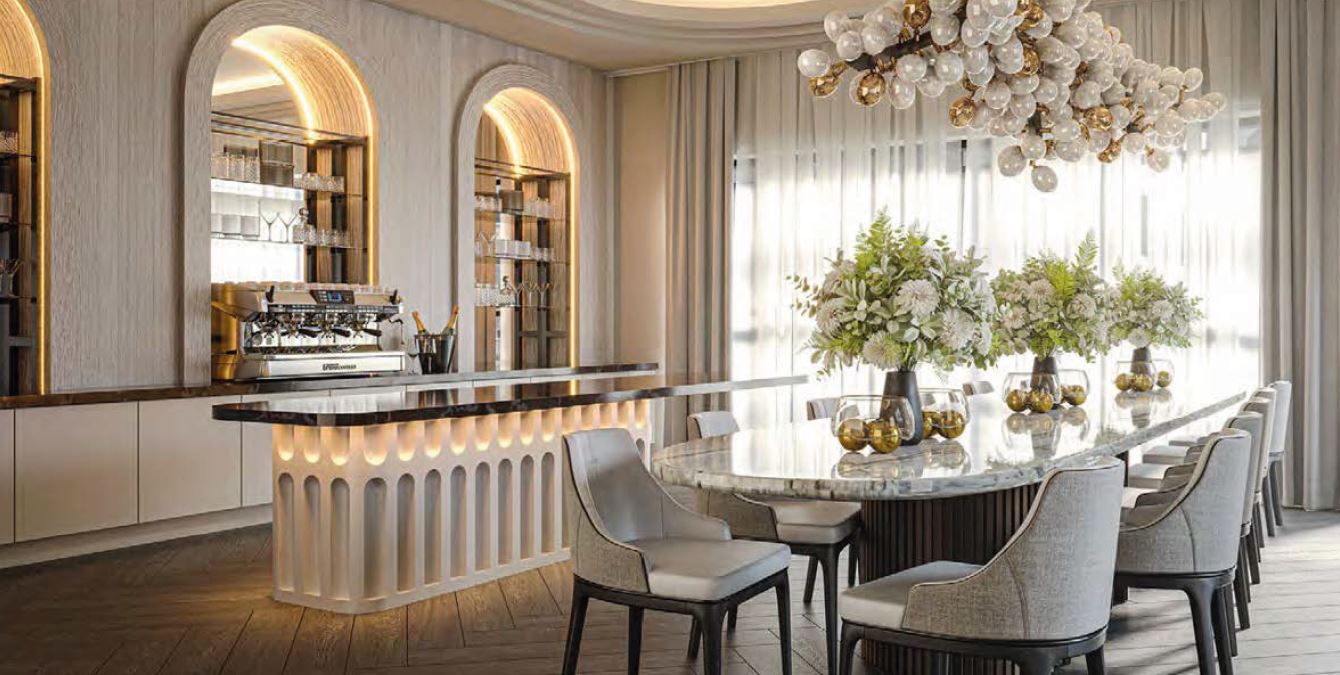
Prices at Wandsworth Mills are reported to start at just over £770,000 for a 1-bedroom flat.
St George’s plans are based on the approved Ram Brewery proposal in 2013, which entailed the construction of new buildings ranging from 2 to 12 storeys in height and a 36-storey tower, providing 661 units in total.
Only 10% of these units would be affordable (mostly comprising 1-bedroom flats, hence unsuitable for families with children). Notably, all 66 affordable units should be intermediate, rather than being designated as social housing or “genuinely affordable” accommodation.
- Read our article: A guide to understand affordable housing in Wandsworth
In any case, the intermediate housing is only located in one single block on the side of the site, while the tower is exclusively dedicated to private “luxury” housing.
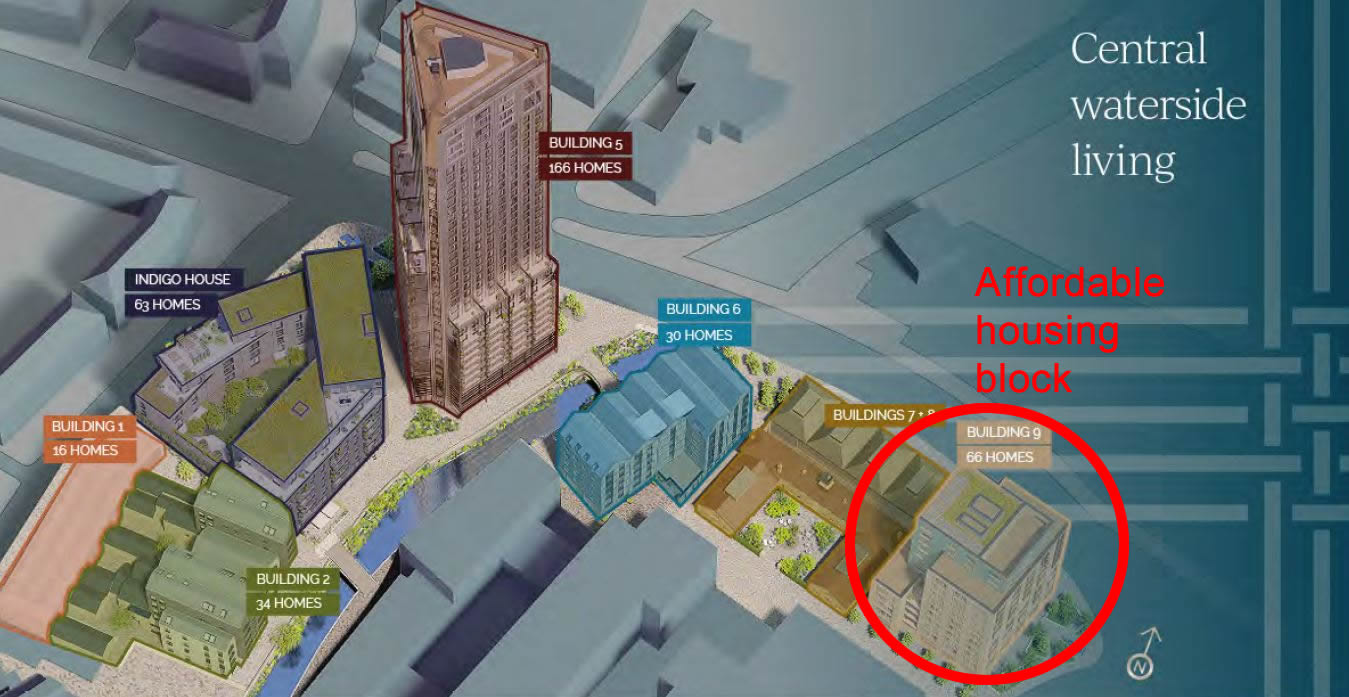
A highly contentious tower
The controversial 36-storey tower was approved after the Secretary of State rejected a previous plan that included 2 enormous towers. During the planning meeting at Wandsworth Council in 2013, a Conservative councillor declared:
“I am sure no-one will notice it when they are out shopping there“
Labour councillors Belton (now chair of the planning committee) and Randall voted against the proposal but all Conservatives voted in favour of the scheme.
It should be noted that at the time, while English Heritage argued that the tower caused harm to the listed buildings, this concern was downplayed by officers who justified that … “harm” was not as severe as “extreme harm“.
- Read our article: 36-storey tower approved by the Conservatives for Wandsworth Town
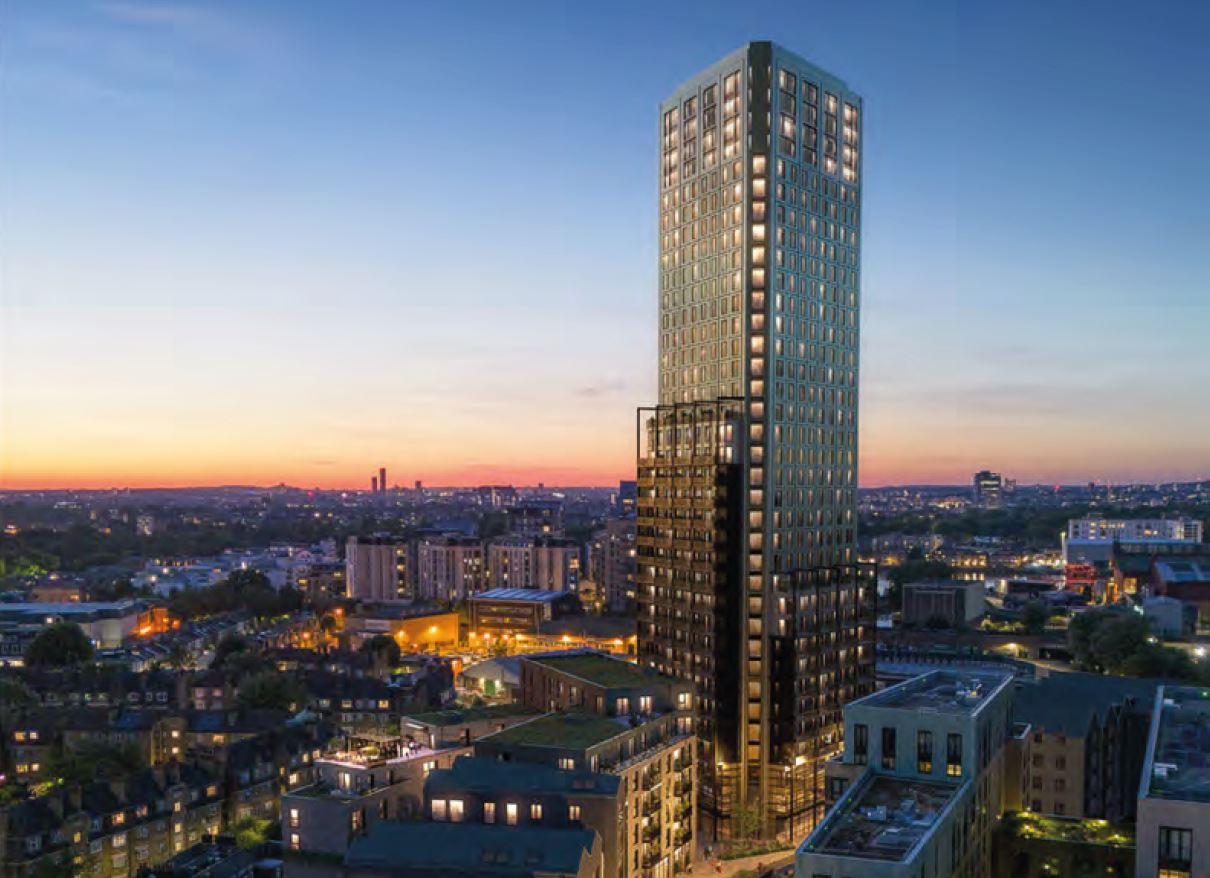
Years of turmoil for the Ram Brewery site
After a decade-long influx of Chinese investment in London’s property development, initially encouraged by former Prime Minister David Cameron and former London Mayor Boris Johnson, London suffered greatly of the financial difficulties in the Chinese property market.
While Chinese investment significantly contributed to property projects in London for years, pressure from Chinese authorities to focus on domestic projects led to consequences in London.
The remaining portion of the Ram Brewery development site in Wandsworth (which includes the controversial 36-storey tower), owned by Shanghai-based Greenland Holdings, was sold to British housebuilder Berkeley Group in 2022 for about £40m.
- Read our article: Ram Brewery’s owner sold site amidst financial difficulties
An initial plan for the Ram Brewery was approved by Wandsworth Tory Council in 2008 but later successfully contested during one of the biggest public inquiries in recent London history.
The original plan included two towers of 32 and 42 storeys and was eventually refused by the Secretary of States. The primary reason for refusal was that “the proposed development would have an unacceptably harmful effect on the character and appearance of its surroundings, including important historic assets“.
- Read our article: The Ram Brewery verdict: analysis of the government’s refusal
